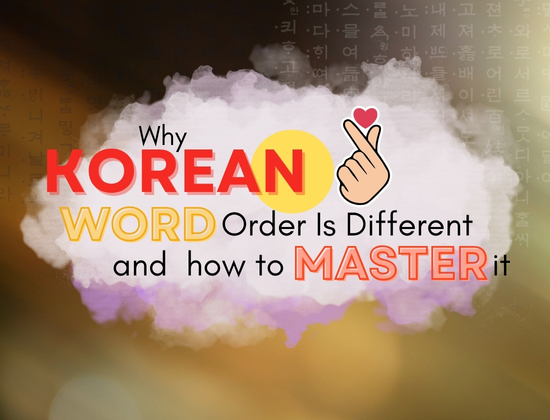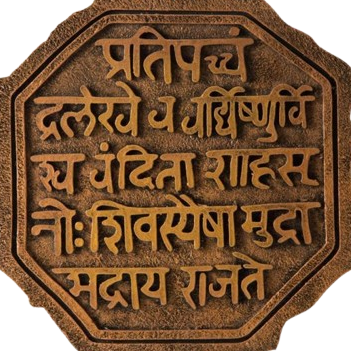
Why Korean Word Order Is Different—and How to Master It
.
Learning Korean is exciting, but it also comes with surprises. One of the biggest is the way Korean sentences are built. If you’ve ever felt like the grammar is flipped or wondered why the verb shows up so late in a sentence, you’re not alone
At TLS, we’ve helped hundreds of learners decode the logic behind Korean word order. And we’re here to help you do the same, confidently, and step by step
1. Understand the Core Difference
English follows SVO
Subject Verb Object
Example
I eat apples
Korean follows SOV
Subject Object Verb
Example
나는 사과를 먹어요
naneun sagwareul meogeoyo
I apple eat
This means the verb always comes at the end of the sentence in Korean. It holds the core meaning, so the sentence stays open-ended until the final word
At TLS, this is one of the first things we train your mind to adjust to. Once this shift happens, fluency flows more naturally
2. Learn to Respect the Verb
In Korean, the verb is everything. It gives you
-
Tense
-
Politeness level
-
Context
-
Mood of the sentence
Until the verb appears, the sentence is incomplete
Example
저는 친구랑 영화관에서 영화를
jeoneun chingurang yeonghwagwaneseo yeonghwareul
I was with my friend at the cinema watching a movie
Now comes the verb
봤어요
bwasseoyo
watched
At TLS, we help students build sentence anticipation so they learn to listen and speak with clarity
3. Master Korean Particles
Particles are grammatical markers that show what role each word plays. They're essential in Korean because they let you move words around without changing the meaning
Here are the common particles you need to know
-
은 는
eun neun
topic marker -
이 가
i ga
subject marker -
을 를
eul reul
object marker -
에 에서
e eseo
location/time marker -
랑 하고
rang hago
with marker
Example
철수가 사과를 먹었어요
Cheolsu-ga sagwareul meogeosseoyo
Cheolsu ate an apple
Or
사과를 철수가 먹었어요
sagwareul Cheolsu-ga meogeosseoyo
Same meaning
TLS offers hands-on drills to help you use these particles with confidence so you don’t rely on rigid word order
4. Think in Korean Order
To build Korean sentences correctly, train your brain to follow the Korean pattern
Verb → Object → Subject
If you want to say I drink coffee
Start with the verb
마셔요
masyeoyo
drink
Then the object
커피를
keopireul
coffee
Then subject
나는
naneun
I
Full sentence
나는 커피를 마셔요
naneun keopireul masyeoyo
At TLS, we make this fun through sentence-building games that build fluency through play
5. Learn Chunks Not Words
Learning Korean is easier when you memorise useful phrases instead of breaking everything down word by word. Here are examples
-
뭐 해요
mwo haeyo
What are you doing -
지금 어디 가요
jigeum eodi gayo
Where are you going now? -
밥 먹었어요
bap meogeosseoyo
Did you eat
TLS uses conversation-based lessons so you absorb natural phrasing from day one
6. Listen Differently
Since the verb comes at the end, Korean forces you to hold back and wait for the full meaning. Example
어제 친구랑 카페에서
eoje chingurang kapeeseo
Yesterday, with a friend at the café
Now we add the action
-
만났어요
mannasseoyo
met -
공부했어요
gongbuhaesseoyo
studied -
싸웠어요
ssawosseoyo
fought
TLS trains you with real-life listening tasks that sharpen your attention to structure and context
7. Use Native Content Effectively
Watch K-dramas and listen to Kpop—but actively. TLS recommends this simple process
-
Watch a clip with Korean subtitles
-
Pause and repeat each line
-
Identify the particles and the verb
-
Say it out loud with natural intonation
Example
이거 뭐예요
igeo mwoyeyo
What is this
This helps you build grammar instinct, not just passive vocabulary
8. Use TLS Sentence Tools
TLS provides learners with sentence cards, grammar games, and live feedback. These tools help you build sentences in real time and correct yourself with guidance
We help you turn grammar from a theory into a habit
9. Be Comfortable With Simplicity
Korean often drops the subject or object when it’s obvious. Example
먹었어요
meogeosseoyo
ate
Depending on the situation, this could mean
I ate
Did you eat
She ate
TLS creates mini-dialogues to help you feel at ease with these shorthand sentence styles and use them naturally
10. Learn With Structure, Not Stress
Understanding Korean word order is key to fluency. At TLS, we teach grammar using conversation, storytelling, and feedback, not boring lectures
You’ll learn how to
-
Think in Korean sentence structure
-
Speak with clarity and confidence
-
Listen fully before replying
-
Use particles and verbs correctly from day one
Whether you're watching K-dramas, planning to visit Korea, or preparing for exams, TLS adapts to your goals and pace
Final Thought from The Language Skool
Korean grammar isn’t confusing when you understand its rhythm. At TLS, we help you get into that rhythm sentence by sentence
Once you master Korean word order, your learning feels smooth and natural. You’ll express yourself with precision and understand native speakers better than ever
Join us at TLS and discover how language learning can be structured simply and successfully
Your Korean journey starts with one verb at a time, and we’re here to guide you all the way.












